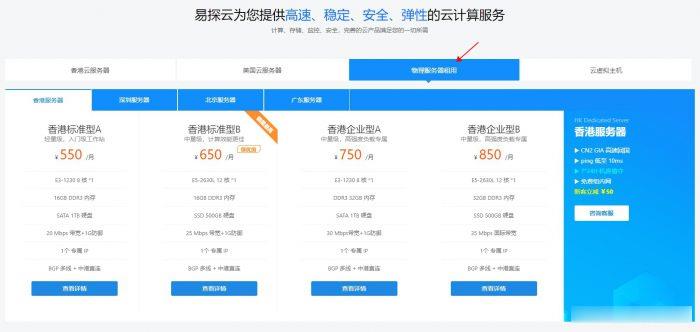yearadmit
admit 时间:2021-01-25 阅读:()
GeertMeyfroidtPierre-EdouardBollaertPaulE.
MarikAcuteischemicstrokeintheICU:toadmitornottoadmitReceived:1April2014Accepted:1April2014Publishedonline:8April2014Springer-VerlagBerlinHeidelbergandESICM2014G.
Meyfroidt())IntensiveCareMedicine,KULeuven,Line1:UZLeuven,3000Louvain,Belgiume-mail:geert.
meyfroidt@uzleuven.
beP.
-E.
BollaertServicedeReanimationMedicale,CHUdeNancy,Nancy,FranceP.
E.
MarikEasternVirginiaMedicalSchool,Norfolk,VA,USAAcuteischemicstroke(AIS)isanimportanthealth-careproblemworldwide,andasignicantcauseofdisabilityaswellasmortality.
TheincidenceofAISisexpectedtoincreaseinthefuture,becausethemajorityofAISarecausedbycardio-embolicdisordersandatherosclerosis,typicalfortheageingpopulation.
OnlytwointerventionsinsmallsubsetsofpatientshavebeendemonstratedtoimprovetheoutcomeofAISpatients.
ThesinglemostimportantinterventiontoalterthenaturalhistoryofAISandimprovethepatients'functionaloutcomeisthetimelyadministrationofathrombolyticagent(intra-venousrt-PA)intheappropriatepatientwithinthenarrow4.
5-hwindow[1].
Endovasculartherapyrepresentsanalternativetherapytointravenousrt-PAinthosewhoarenotcandidatesforintravenousrt-PA,buthasnoadvantageoverintravenousrt-PA[2].
Hemisphericdecompressioninpatientslessthan60yearsofagewithmalignantmiddlecerebralarteryterritory(MCA)infarctionandspace-occu-pyingbrainoedemahasbeendemonstratedtoimproveoutcome.
Thisresultwasconrmedinanindividualpatientmeta-analysis,demonstratingamarkedimprovementinneurologicalrecoveryandsurvival[3].
Fortheagegroupolderthan60yearsofagewithmalignantMCAinfarction,whoareover-representedintheAISpatientgroup,therecentlypublishedDESTINYIItrialwasabletodemon-stratethatdecompressionwasalsoabletoreducemortality,butnotinuencetheproportionofpatientswithseveredisability[4].
Despiteinitialpromise,neuroprotectiveagentshavefailedtoshowabenetinthemanagementofAIS[5],ashavetightglycaemiccontrol[6],highdosealbumin[7]andtheuseofanti-hypertensiveagents[8,9].
Today,increasingnumbersofpatientswithAISareadmittedtoanintensivecareunit(ICU)forvariousindi-cations.
InthisissueofIntensiveCareMedicine,Kirkmanetal.
presentastateoftheartreviewoftheICUmanage-mentofpatientswithAIS[10].
Theirreviewisverythoroughandprovideskeyrecommendationsontheaforementionedinterventions.
Unfortunately,theywerenotabletoprovidemuchevidence-basedguidanceastowhichpatientsshouldbeadmittedtotheICU,andwhichsubgroupsofAISpatientscouldactuallybenetfromICUmanagement.
TheguidelinesoftheSocietyofCriticalCareMedicinestatethat''ingeneralICUsshouldbereservedforthosepatentswithreversiblemedicalconditionswhohaveareasonableprospectofsubstantialrecovery''[11].
InherentinthisguidelineasitappliestotheAISpatient,istheassumptionthattheintensivisthasanarsenaloftherapeuticinterventionswhichwillalterthecourseofthepatient'sstrokeandthattheseinterventionswillimprovethepatient'soutcome.
IfwetakealookatthedataonmechanicalventilationinAISpatients,probablyoneofthemainindicationsforreferraltoanICU,notsurprisingly,therequirementformechanicalventilationinitselfappearstobeassociatedwithbothahighershort-andlong-termmortality.
Usingalargeadministrativedatabasecovering93countiesintheeasternhalfoftheUSA,Golestanianetal.
[12]evaluatedtheoutcomesof31,301AISpatients.
The30-dayand1-yearmortalitywas64%and81%respec-tivelyinthosepatientswhorequiredmechanicalventilationcomparedto16%and35%inthosepatientswhodidnotrequiremechanicalventilation.
Anumberofsmallerstud-ies(lessthan100patientseach)haveaddressedthisquestionaswell.
ThesestudiesconrmedtheobservedhighIntensiveCareMed(2014)40:749–751DOI10.
1007/s00134-014-3289-5EDITORIAL1-yearmortalityforpatientsrequiringmechanicalventi-lation,37–87%,withnoclearevidenceofimprovementovertime[13–18].
Furthermore,severedisabilitywasobservedin20–45%ofsurvivors.
InthisdiscussiononthebenetofmechanicalventilationfortheoutcomeofAIS,thereasonwhymechanicalventilationwasinitiatedmightbeimportant.
Unfortunately,thiswasonlyassessedinfourofthesestudies(Fig.
1)[13–16].
Althoughthepopulationsamplesincludedinthelatterstudiesweresmall,thesedatasuggestthatthosepatientsintubatedandventilatedforcomaorneurologicdeteriorationmaynotbenetfrommechanicalventilation.
Thelackofdataontheoutcomebenetofspecicther-apeuticinterventionstoimprovetheoutcomeofthemajorityofpatientssufferingfromAIScertainlydoesnotimplythatphysiciansshouldadoptafatalisticapproachwhenmanag-ingthesepatients.
Anumberofwell-conductedclinicaltrialshavedemonstratedthatthemortalityandfunctionalrecoveryofpatientsfollowingastrokearesignicantlyimprovedwhenthesepatientsarecaredforinaspecializedstrokeunitascomparedtoageneralmedicalward[19,20].
Theseunitsprovidespecializednursingcareandawell-organizedmul-tidisciplinaryrehabilitationprogram.
Strokeunitcarereducesthemedicalcomplicationsinthesepatientsandallowsforearlierandmoreintenserehabilitation.
Incontrasttothis,specicstrokeICUswereaban-donedinthe1970safteritwasdemonstratedthatsuchunitshadverylittleimpactontheoutcomeofpatientsfollowingastroke.
Nevertheless,aproportionofpatientswhosufferfromstrokemaybenetfromadmissiontotheICU.
Endotrachealintubationandmechanicalventilationshouldbereservedforpatientswithreversiblerespiratoryfailurewhoarelikelytohaveagoodprognosisforafunctionalrecovery,e.
g.
inthetreatmentandpreventionofaspirationpneumoniaduetotemporallossofbulbarfunction,occurringin37–78%ofstrokepatients[21].
LargeMCAstrokeswhomayrequiredecompressivecraniectomy,regardlessoftheirage[3,4],andspace-occupyingcerebellarinfarctionsaccessibletoapromptsurgicaldecompression[22]areaclearindicationforICUadmission.
Insomecases,themanagementofbloodpressure,orseizures,mightnecessitateanICUadmission.
FurtherresearchshouldfocusontheuseofvalidatedstrokeseverityscoringsystemssuchastheNIHStrokeScale(NIHSS)ortheTriageStrokePanel(MMX),takingintoaccounttheinitialclinicalevolutionofthesepatients[23],toidentifythosepatientswhowillbenetfromICUreferral.
Itisclearthataggressivemedicalmeasuresindeeplycomatosepatients,withalowprobabilityofafavourableoutcomeareaformofnon-benecialcare,whichwillonlyincreasetheburdenonpatients,familiesandthehealth-caresystem.
Theparadigmof''lessmaybemore''wouldappeartobeappropriateforthesepatients[24].
References1.
LeesKR,BluhmkiE,vonKR,BrottTG,ToniD,GrottaJC,AlbersGW,KasteM,MarlerJR,HamiltonSA,TilleyBC,DavisSM,DonnanGA,HackeW(2010)Timetotreatmentwithintravenousalteplaseandoutcomeinstroke:anupdatedpooledanalysisofECASS,ATLANTIS,NINDS,andEPITHETtrials.
Lancet375:1695–17032.
CicconeA,ValvassoriL,NichelattiM,SgoifoA,PonzioM,SterziR,BoccardiE(2013)Endovasculartreatmentforacuteischemicstroke.
NEnglJMed368:904–9133.
VahediK,HofmeijerJ,JuettlerE,VicautE,GeorgeB,AlgraA,AmelinkGJ,SchmiedeckP,SchwabS,RothwellPM,BousserMG,vanderWorpHB,HackeW(2007)Earlydecompressivesurgeryinmalignantinfarctionofthemiddlecerebralartery:apooledanalysisofthreerandomisedcontrolledtrials.
LancetNeurol6:215–2220102030405060708090100Burtinetal.
Wijdicksetal.
Steineretal.
Lekeretal.
ComaConvulsionsElectiveResp.
failure%1-yearmortalityFig.
1One-yearmortalityinstrokepatientsaccordingtothecauseofmechanicalventilation7504.
Ju¨ttlerE,UnterbergA,WoitzikJ,Bo¨selJ,AmiriH,SakowitzOW,GondanM,SchillerP,LimprechtR,LuntzS,SchneiderH,PinzerT,HobohmC,MeixensbergerJ(2014)HackeWfortheDESTINYIIInvestigators.
Hemicraniectomyinolderpatientswithextensivemiddlecerebralarterystroke.
NEngJMed370:1091–11005.
GinsbergMD(2008)Neuroprotectionforischemicstroke:past,presentandfuture.
Neuropharmacology55:363–3896.
RossoC,CorvolJC,PiresC,CrozierS,AttalY,JacqueminetS,DeltourS,MultluG,LegerA,MeresseI,PayanC,DormontD,SamsonY(2012)Intensiveversussubcutaneousinsulininpatientswithhyperacutestroke:resultsfromtherandomizedINSULINFARCTtrial.
Stroke43:2343–23497.
GinsbergMD,PaleschYY,HillMD,MartinRH,MoyCS,BarsanWG,WaldmanBD,TamarizD,RyckborstKJ(2013)High-dosealbumintreatmentforacuteischaemicstroke(ALIAS)part2:arandomised,double-blind,phase3,placebo-controlledtrial.
LancetNeurol12:1049–10588.
HeJ,ZhangY,XuT,ZhaoQ,WangD,ChenCS,TongW,LiuC,XuT,JuZ(2014)Effectofimmediatebloodpressurereductionondeathandmajordisabilityinpatientswithacuteischemicstroke:theCATISrandomizedclinicaltrial.
JAMA311:479–4899.
HankeyGJ(2011)Loweringbloodpressureinacutestroke:theSCASTtrial.
Lancet377:696–69810.
KirkmanMA,CiterioG,SmithM(2014).
Theintensivecaremanagementofacuteischemicstroke:anoverview.
IntensiveCareMed.
doi:10.
1007/s00134-014-3266-z11.
TaskForceoftheAmericanCollegeofCriticalCareMedicine,SocietyofCriticalCareMedicine(1999)Guidelinesforintensivecareunitadmission,discharge,andtriage.
CritCareMed27:633–63812.
GolestanianE,LiouJI,SmithMA(2009)Long-termsurvivalinoldercriticallyillpatientswithacuteischemicstroke.
CritCareMed37:3107–311313.
BurtinP,BollaertPE,FeldmannL,NaceL,LelargeP,BauerP,LarcanA(1994)Prognosisofstrokepatientsundergoingmechanicalventilation.
IntensiveCareMed20:32–3614.
SteinerT,MendozaG,DeGeorgiaM,SchellingerP,HolleR,HackeW(1997)Prognosisofstrokepatientsrequiringmechanicalventilationinaneurologicalcriticalcareunit.
Stroke28:711–71515.
WijdicksEF,ScottJP(1997)Causesandoutcomeofmechanicalventilationinpatientswithhemisphericischemicstroke.
MayoClinProc72:210–21316.
LekerRR,Ben-HurT(2000)Prognosticfactorsinarticiallyventilatedstrokepatients.
JNeurolSci176:83–8717.
SantoliF,DeJB,HayonJ,TranB,PiperaudM,MerrerJ,OutinH(2001)Mechanicalventilationinpatientswithacuteischemicstroke:survivalandoutcomeatoneyear.
IntensiveCareMed27:1141–114618.
Navarrete-NavarroP,Rivera-FernandezR,Lopez-MutuberriaMT,GalindoI,MurilloF,DominguezJM,MunozA,Jimenez-MoragasJM,NacleB,Vazquez-MataG(2003)Outcomepredictionintermsoffunctionaldisabilityandmortalityat1yearamongICU-admittedseverestrokepatients:aprospectiveepidemiologicalstudyinthesouthoftheEuropeanUnion(EvascanProject,Andalusia,Spain).
IntensiveCareMed29:1237–124419.
StrokeUnitTrialists'Collaboration(2013)Organisedinpatient(strokeunit)careforstroke.
CochraneDatabaseSystRev9:CD00019720.
LanghorneP,deVilliersL,PandianJD(2012)Applicabilityofstroke-unitcaretolow-incomeandmiddle-incomecountries.
LancetNeurol11:341–34821.
MartinoR,FoleyN,BhogalS,DiamantN,SpeechleyM,TeasellR(2005)Dysphagiaafterstroke:incidence,diagnosisandpulmonarycomplications.
Stroke36:2756–276322.
JuttlerE,SchweickertS,RinglebPA,HuttnerHB,KohrmannM,AschoffA(2009)Long-termoutcomeaftersurgicaltreatmentforspace-occupyingcerebellarinfarction:experiencein56patients.
Stroke40:3060–306623.
BrounsR,SheorajpandayR,KunnenJ,DeSurgelooseD,DeDeynPP(2009)Clinical,biochemicalandneuroimagingparametersafterthrombolytictherapypredictlong-termstrokeoutcome.
EurNeurol62(1):9–1524.
KnoxM,PickkersP(2013)''Lessismore''incriticallyillpatients:nottoointensive.
JAMAInternMed173:1369–1372751
MarikAcuteischemicstrokeintheICU:toadmitornottoadmitReceived:1April2014Accepted:1April2014Publishedonline:8April2014Springer-VerlagBerlinHeidelbergandESICM2014G.
Meyfroidt())IntensiveCareMedicine,KULeuven,Line1:UZLeuven,3000Louvain,Belgiume-mail:geert.
meyfroidt@uzleuven.
beP.
-E.
BollaertServicedeReanimationMedicale,CHUdeNancy,Nancy,FranceP.
E.
MarikEasternVirginiaMedicalSchool,Norfolk,VA,USAAcuteischemicstroke(AIS)isanimportanthealth-careproblemworldwide,andasignicantcauseofdisabilityaswellasmortality.
TheincidenceofAISisexpectedtoincreaseinthefuture,becausethemajorityofAISarecausedbycardio-embolicdisordersandatherosclerosis,typicalfortheageingpopulation.
OnlytwointerventionsinsmallsubsetsofpatientshavebeendemonstratedtoimprovetheoutcomeofAISpatients.
ThesinglemostimportantinterventiontoalterthenaturalhistoryofAISandimprovethepatients'functionaloutcomeisthetimelyadministrationofathrombolyticagent(intra-venousrt-PA)intheappropriatepatientwithinthenarrow4.
5-hwindow[1].
Endovasculartherapyrepresentsanalternativetherapytointravenousrt-PAinthosewhoarenotcandidatesforintravenousrt-PA,buthasnoadvantageoverintravenousrt-PA[2].
Hemisphericdecompressioninpatientslessthan60yearsofagewithmalignantmiddlecerebralarteryterritory(MCA)infarctionandspace-occu-pyingbrainoedemahasbeendemonstratedtoimproveoutcome.
Thisresultwasconrmedinanindividualpatientmeta-analysis,demonstratingamarkedimprovementinneurologicalrecoveryandsurvival[3].
Fortheagegroupolderthan60yearsofagewithmalignantMCAinfarction,whoareover-representedintheAISpatientgroup,therecentlypublishedDESTINYIItrialwasabletodemon-stratethatdecompressionwasalsoabletoreducemortality,butnotinuencetheproportionofpatientswithseveredisability[4].
Despiteinitialpromise,neuroprotectiveagentshavefailedtoshowabenetinthemanagementofAIS[5],ashavetightglycaemiccontrol[6],highdosealbumin[7]andtheuseofanti-hypertensiveagents[8,9].
Today,increasingnumbersofpatientswithAISareadmittedtoanintensivecareunit(ICU)forvariousindi-cations.
InthisissueofIntensiveCareMedicine,Kirkmanetal.
presentastateoftheartreviewoftheICUmanage-mentofpatientswithAIS[10].
Theirreviewisverythoroughandprovideskeyrecommendationsontheaforementionedinterventions.
Unfortunately,theywerenotabletoprovidemuchevidence-basedguidanceastowhichpatientsshouldbeadmittedtotheICU,andwhichsubgroupsofAISpatientscouldactuallybenetfromICUmanagement.
TheguidelinesoftheSocietyofCriticalCareMedicinestatethat''ingeneralICUsshouldbereservedforthosepatentswithreversiblemedicalconditionswhohaveareasonableprospectofsubstantialrecovery''[11].
InherentinthisguidelineasitappliestotheAISpatient,istheassumptionthattheintensivisthasanarsenaloftherapeuticinterventionswhichwillalterthecourseofthepatient'sstrokeandthattheseinterventionswillimprovethepatient'soutcome.
IfwetakealookatthedataonmechanicalventilationinAISpatients,probablyoneofthemainindicationsforreferraltoanICU,notsurprisingly,therequirementformechanicalventilationinitselfappearstobeassociatedwithbothahighershort-andlong-termmortality.
Usingalargeadministrativedatabasecovering93countiesintheeasternhalfoftheUSA,Golestanianetal.
[12]evaluatedtheoutcomesof31,301AISpatients.
The30-dayand1-yearmortalitywas64%and81%respec-tivelyinthosepatientswhorequiredmechanicalventilationcomparedto16%and35%inthosepatientswhodidnotrequiremechanicalventilation.
Anumberofsmallerstud-ies(lessthan100patientseach)haveaddressedthisquestionaswell.
ThesestudiesconrmedtheobservedhighIntensiveCareMed(2014)40:749–751DOI10.
1007/s00134-014-3289-5EDITORIAL1-yearmortalityforpatientsrequiringmechanicalventi-lation,37–87%,withnoclearevidenceofimprovementovertime[13–18].
Furthermore,severedisabilitywasobservedin20–45%ofsurvivors.
InthisdiscussiononthebenetofmechanicalventilationfortheoutcomeofAIS,thereasonwhymechanicalventilationwasinitiatedmightbeimportant.
Unfortunately,thiswasonlyassessedinfourofthesestudies(Fig.
1)[13–16].
Althoughthepopulationsamplesincludedinthelatterstudiesweresmall,thesedatasuggestthatthosepatientsintubatedandventilatedforcomaorneurologicdeteriorationmaynotbenetfrommechanicalventilation.
Thelackofdataontheoutcomebenetofspecicther-apeuticinterventionstoimprovetheoutcomeofthemajorityofpatientssufferingfromAIScertainlydoesnotimplythatphysiciansshouldadoptafatalisticapproachwhenmanag-ingthesepatients.
Anumberofwell-conductedclinicaltrialshavedemonstratedthatthemortalityandfunctionalrecoveryofpatientsfollowingastrokearesignicantlyimprovedwhenthesepatientsarecaredforinaspecializedstrokeunitascomparedtoageneralmedicalward[19,20].
Theseunitsprovidespecializednursingcareandawell-organizedmul-tidisciplinaryrehabilitationprogram.
Strokeunitcarereducesthemedicalcomplicationsinthesepatientsandallowsforearlierandmoreintenserehabilitation.
Incontrasttothis,specicstrokeICUswereaban-donedinthe1970safteritwasdemonstratedthatsuchunitshadverylittleimpactontheoutcomeofpatientsfollowingastroke.
Nevertheless,aproportionofpatientswhosufferfromstrokemaybenetfromadmissiontotheICU.
Endotrachealintubationandmechanicalventilationshouldbereservedforpatientswithreversiblerespiratoryfailurewhoarelikelytohaveagoodprognosisforafunctionalrecovery,e.
g.
inthetreatmentandpreventionofaspirationpneumoniaduetotemporallossofbulbarfunction,occurringin37–78%ofstrokepatients[21].
LargeMCAstrokeswhomayrequiredecompressivecraniectomy,regardlessoftheirage[3,4],andspace-occupyingcerebellarinfarctionsaccessibletoapromptsurgicaldecompression[22]areaclearindicationforICUadmission.
Insomecases,themanagementofbloodpressure,orseizures,mightnecessitateanICUadmission.
FurtherresearchshouldfocusontheuseofvalidatedstrokeseverityscoringsystemssuchastheNIHStrokeScale(NIHSS)ortheTriageStrokePanel(MMX),takingintoaccounttheinitialclinicalevolutionofthesepatients[23],toidentifythosepatientswhowillbenetfromICUreferral.
Itisclearthataggressivemedicalmeasuresindeeplycomatosepatients,withalowprobabilityofafavourableoutcomeareaformofnon-benecialcare,whichwillonlyincreasetheburdenonpatients,familiesandthehealth-caresystem.
Theparadigmof''lessmaybemore''wouldappeartobeappropriateforthesepatients[24].
References1.
LeesKR,BluhmkiE,vonKR,BrottTG,ToniD,GrottaJC,AlbersGW,KasteM,MarlerJR,HamiltonSA,TilleyBC,DavisSM,DonnanGA,HackeW(2010)Timetotreatmentwithintravenousalteplaseandoutcomeinstroke:anupdatedpooledanalysisofECASS,ATLANTIS,NINDS,andEPITHETtrials.
Lancet375:1695–17032.
CicconeA,ValvassoriL,NichelattiM,SgoifoA,PonzioM,SterziR,BoccardiE(2013)Endovasculartreatmentforacuteischemicstroke.
NEnglJMed368:904–9133.
VahediK,HofmeijerJ,JuettlerE,VicautE,GeorgeB,AlgraA,AmelinkGJ,SchmiedeckP,SchwabS,RothwellPM,BousserMG,vanderWorpHB,HackeW(2007)Earlydecompressivesurgeryinmalignantinfarctionofthemiddlecerebralartery:apooledanalysisofthreerandomisedcontrolledtrials.
LancetNeurol6:215–2220102030405060708090100Burtinetal.
Wijdicksetal.
Steineretal.
Lekeretal.
ComaConvulsionsElectiveResp.
failure%1-yearmortalityFig.
1One-yearmortalityinstrokepatientsaccordingtothecauseofmechanicalventilation7504.
Ju¨ttlerE,UnterbergA,WoitzikJ,Bo¨selJ,AmiriH,SakowitzOW,GondanM,SchillerP,LimprechtR,LuntzS,SchneiderH,PinzerT,HobohmC,MeixensbergerJ(2014)HackeWfortheDESTINYIIInvestigators.
Hemicraniectomyinolderpatientswithextensivemiddlecerebralarterystroke.
NEngJMed370:1091–11005.
GinsbergMD(2008)Neuroprotectionforischemicstroke:past,presentandfuture.
Neuropharmacology55:363–3896.
RossoC,CorvolJC,PiresC,CrozierS,AttalY,JacqueminetS,DeltourS,MultluG,LegerA,MeresseI,PayanC,DormontD,SamsonY(2012)Intensiveversussubcutaneousinsulininpatientswithhyperacutestroke:resultsfromtherandomizedINSULINFARCTtrial.
Stroke43:2343–23497.
GinsbergMD,PaleschYY,HillMD,MartinRH,MoyCS,BarsanWG,WaldmanBD,TamarizD,RyckborstKJ(2013)High-dosealbumintreatmentforacuteischaemicstroke(ALIAS)part2:arandomised,double-blind,phase3,placebo-controlledtrial.
LancetNeurol12:1049–10588.
HeJ,ZhangY,XuT,ZhaoQ,WangD,ChenCS,TongW,LiuC,XuT,JuZ(2014)Effectofimmediatebloodpressurereductionondeathandmajordisabilityinpatientswithacuteischemicstroke:theCATISrandomizedclinicaltrial.
JAMA311:479–4899.
HankeyGJ(2011)Loweringbloodpressureinacutestroke:theSCASTtrial.
Lancet377:696–69810.
KirkmanMA,CiterioG,SmithM(2014).
Theintensivecaremanagementofacuteischemicstroke:anoverview.
IntensiveCareMed.
doi:10.
1007/s00134-014-3266-z11.
TaskForceoftheAmericanCollegeofCriticalCareMedicine,SocietyofCriticalCareMedicine(1999)Guidelinesforintensivecareunitadmission,discharge,andtriage.
CritCareMed27:633–63812.
GolestanianE,LiouJI,SmithMA(2009)Long-termsurvivalinoldercriticallyillpatientswithacuteischemicstroke.
CritCareMed37:3107–311313.
BurtinP,BollaertPE,FeldmannL,NaceL,LelargeP,BauerP,LarcanA(1994)Prognosisofstrokepatientsundergoingmechanicalventilation.
IntensiveCareMed20:32–3614.
SteinerT,MendozaG,DeGeorgiaM,SchellingerP,HolleR,HackeW(1997)Prognosisofstrokepatientsrequiringmechanicalventilationinaneurologicalcriticalcareunit.
Stroke28:711–71515.
WijdicksEF,ScottJP(1997)Causesandoutcomeofmechanicalventilationinpatientswithhemisphericischemicstroke.
MayoClinProc72:210–21316.
LekerRR,Ben-HurT(2000)Prognosticfactorsinarticiallyventilatedstrokepatients.
JNeurolSci176:83–8717.
SantoliF,DeJB,HayonJ,TranB,PiperaudM,MerrerJ,OutinH(2001)Mechanicalventilationinpatientswithacuteischemicstroke:survivalandoutcomeatoneyear.
IntensiveCareMed27:1141–114618.
Navarrete-NavarroP,Rivera-FernandezR,Lopez-MutuberriaMT,GalindoI,MurilloF,DominguezJM,MunozA,Jimenez-MoragasJM,NacleB,Vazquez-MataG(2003)Outcomepredictionintermsoffunctionaldisabilityandmortalityat1yearamongICU-admittedseverestrokepatients:aprospectiveepidemiologicalstudyinthesouthoftheEuropeanUnion(EvascanProject,Andalusia,Spain).
IntensiveCareMed29:1237–124419.
StrokeUnitTrialists'Collaboration(2013)Organisedinpatient(strokeunit)careforstroke.
CochraneDatabaseSystRev9:CD00019720.
LanghorneP,deVilliersL,PandianJD(2012)Applicabilityofstroke-unitcaretolow-incomeandmiddle-incomecountries.
LancetNeurol11:341–34821.
MartinoR,FoleyN,BhogalS,DiamantN,SpeechleyM,TeasellR(2005)Dysphagiaafterstroke:incidence,diagnosisandpulmonarycomplications.
Stroke36:2756–276322.
JuttlerE,SchweickertS,RinglebPA,HuttnerHB,KohrmannM,AschoffA(2009)Long-termoutcomeaftersurgicaltreatmentforspace-occupyingcerebellarinfarction:experiencein56patients.
Stroke40:3060–306623.
BrounsR,SheorajpandayR,KunnenJ,DeSurgelooseD,DeDeynPP(2009)Clinical,biochemicalandneuroimagingparametersafterthrombolytictherapypredictlong-termstrokeoutcome.
EurNeurol62(1):9–1524.
KnoxM,PickkersP(2013)''Lessismore''incriticallyillpatients:nottoointensive.
JAMAInternMed173:1369–1372751
- yearadmit相关文档
- 13.8admit
- 二零一八聖誕及新年燈飾佈置工程(第二期)
- Questionadmit
- Engineeringadmit
- boundadmit
- 94.9626752865208admit
易探云:香港大带宽/大内存物理机服务器550元;20Mbps带宽!三网BGP线路
易探云怎么样?易探云隶属于纯乐电商旗下网络服务品牌,香港NTT Communications合作伙伴,YiTanCloud Limited旗下合作云计算品牌,数十年云计算行业经验。发展至今,我们已凝聚起港内领先的开发和运维团队,积累起4年市场服务经验,提供电话热线/在线咨询/服务单系统等多种沟通渠道,7*24不间断服务,3分钟快速响应。目前,易探云提供香港大带宽20Mbps、16G DDR3内存、...

georgedatacenter39美元/月$20/年/洛杉矶独立服务器美国VPS/可选洛杉矶/芝加哥/纽约/达拉斯机房/
georgedatacenter这次其实是两个促销,一是促销一款特价洛杉矶E3-1220 V5独服,性价比其实最高;另外还促销三款特价vps,georgedatacenter是一家成立于2019年的美国VPS商家,主营美国洛杉矶、芝加哥、达拉斯、新泽西、西雅图机房的VPS、邮件服务器和托管独立服务器业务。georgedatacenter的VPS采用KVM和VMware虚拟化,可以选择windows...

spinservers:10Gbps带宽高配服务器月付89美元起,达拉斯/圣何塞机房
spinservers是一家主营国外服务器租用和Hybrid Dedicated等产品的商家,Majestic Hosting Solutions LLC旗下站点,商家数据中心包括美国达拉斯和圣何塞机房,机器一般10Gbps端口带宽,且硬件配置较高。目前,主机商针对达拉斯机房机器提供优惠码,最低款Dual E5-2630L v2+64G+1.6TB SSD月付89美元起,支持PayPal、支付宝等...

admit为你推荐
-
316不锈钢和304哪个好材质 304不锈钢和316不锈钢有什么区别涡轮增压和自然吸气哪个好本田车自然吸气和涡轮增压哪个好手机浏览器哪个好目前手机浏览器哪个最好宝来和朗逸哪个好宝来和朗逸哪个好绝地求生加速器哪个好绝地求生的加速器哪个好用?手机浏览器哪个好用手机用哪个浏览器好一点播放器哪个好哪个播放器最好看书软件哪个好有什么好的读书软件啊?看书软件哪个好什么读书app好用网络机顶盒哪个好哪个品牌的网络机顶盒好用?